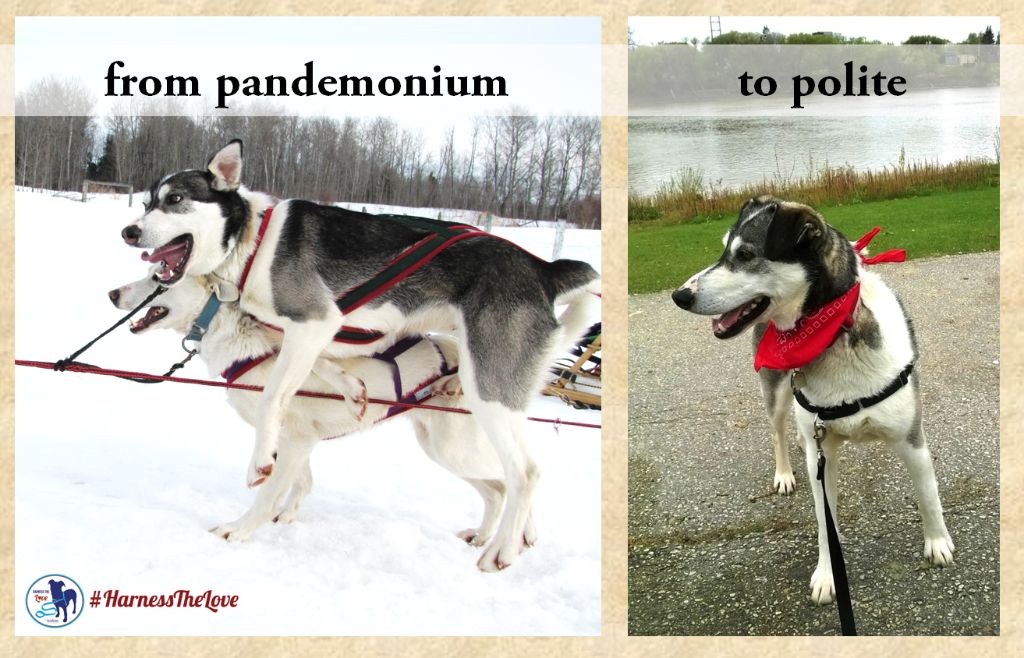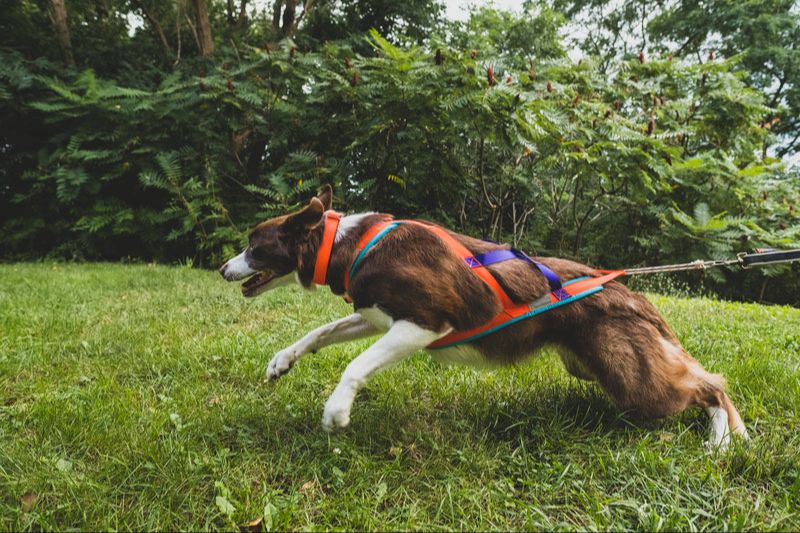Introduction
The debate between dog harnesses and collars has been ongoing for years in the canine community. Many dog owners find themselves wondering which option is truly better for their four-legged companions. While both harnesses and collars can serve important purposes, there are distinct differences between the two that owners must consider.
Dog collars are the traditional option that have been used for centuries to walk dogs and attach identification tags. The collar wraps around the dog’s neck and applies pressure there when pulled. Harnesses offer a different approach, fitting over the dog’s chest and shoulders to distribute pressure across the upper body rather than the neck.
Both collars and harnesses have potential benefits and drawbacks depending on the individual dog and their needs. Aspects like the dog’s size, breed, temperament, and the type of activities they will partake in should all factor into the decision between a collar or harness. Reviewing the pros and cons of each can help owners make the most informed choice.
History of Dog Collars
Dog collars have been used for thousands of years, dating back to ancient civilizations like Greece, Rome and Egypt where dogs were kept for hunting, herding and guarding. The earliest dog collars were made of natural materials like leather, metal and wood and were purely functional – to control, identify and protect working dogs.

As dogs became more domesticated and kept as pets, dog collars evolved into symbols of status, wealth and fashion. In ancient Egypt, dogs of royalty wore ornate collars made of precious metals and jewels. In medieval Europe, nobility marked their hunting dogs with wide, decorated leather collars. By the Renaissance period, smaller collars made of velvet and other fabrics became popular.
It wasn’t until the late 18th century that collars specifically designed for controlling and training dogs emerged. These training collars were made of nylon or leather straps with metal rings or prongs to aid in controlling dogs and preventing them from pulling on the leash or chasing prey while hunting. As dog training methods evolved, so did collar designs.
In the 19th century, more personalized embroidered and engraved collars were used to identify owned dogs. License tags were soon added to collars when rabies vaccination laws went into effect. By the 20th century, mass production allowed for more variety in colors, materials and decorative styles of dog collars as the pet industry boomed.
Today, dog collars continue to serve functional purposes like identification and control, but have also become important accessories used to express a dog’s personality and style.
Types of Dog Collars
There are several common types of dog collars:
Flat collars – These standard collars are simple, flexible bands that loosely encircle the dog’s neck. They come in various materials like nylon, leather, or chain-link metal.
Martingale collars – This type has an adjustable loop that gently tightens around the dog’s neck when you pull on the leash. It helps prevent escapes but avoids putting pressure on the trachea.
Choke collars – Also known as slip collars, these contain metal links that tighten around the dog’s neck when you pull. It’s a controversial and potentially dangerous option.
Prong collars – These have inward-facing prongs and constrict when you pull. While once common for training, many experts now discourage their use due to risks.
Head collars – These fit around the dog’s muzzle and head instead of the neck. They allow control of the head without pressure on the trachea.
No-pull harnesses – These attach around the chest/torso instead of the neck. They gently discourage pulling via chest pressure.
Pros of Dog Collars
Dog collars have some advantages that have made them a popular choice for many dog owners over the years:
Control
Collars provide a way to easily control your dog on a leash when walking or training. The loop encircling the neck allows you to guide the dog’s movement and prevent pulling or lunging. This can help enforce proper manners on walks.
Correction
The tight fit of a collar makes it effective for delivering corrections through leash jerks or other training aids. The snug pressure enables owners to communicate to the dog when its behavior needs adjusting.
Tradition
Collars have been used for dogs for centuries, making them a standard and familiar gear. Many owners simply continue using collars out of habit or belief that it’s the proper way to accessorize dogs.
Cons of Dog Collars
While dog collars are very common, they also come with some downsides to consider:
Can damage trachea: Collars can put pressure on a dog’s trachea or windpipe, especially when pulling or jerking on a leash. The trachea is a sensitive structure and damage to it can result in a collapsed trachea, coughing, or breathing issues. This is especially a concern for breeds with long necks like Dobermans and Greyhounds.
Limited control: Traditional collars offer handling control primarily through neck and leash pressure. Without proper training, this can lead to leash pulling and make walks unpleasant. Collars provide limited means to communicate with or redirect your dog.
Injury risk: Collars pose a strangulation risk if they get caught on something. They can also cause neck chafing if worn constantly. Breakaway collars reduce some of these risks but do not eliminate them. Additionally, hard jerking on a collar can potentially cause neck or spinal injuries.
History of Dog Harnesses

Dog harnesses actually pre-date collars and have been used for thousands of years. In ancient civilizations like Rome, Greece, and Egypt, dogs would be outfitted with leather and fabric harnesses to help control and direct working dogs like hunting dogs or sled dogs.
These early harnesses focused more on function than fashion, and were used primarily for tasks like pulling small carts or sleds. They enabled the handler to have more control over the dog’s movement and direction.
Over time, harnesses evolved along with different dog tasks and roles. In the Middle Ages, harnesses became more decorative and were sometimes embellished with metals, gems or crests to identify noble dogs. When dog sledding became popular in North America in the 19th century, specialized sled dog harnesses were developed to distribute force across a dog’s chest and shoulders.
Modern dog harnesses have come a long way from these early utilitarian designs. Today there are many types of harnesses for all sizes and shapes of dogs, designed for purposes ranging from basic walking to mobility assistance.
Types of Dog Harnesses
There are several common types of harnesses used for dogs:

Back-Clip Harness
The back-clip harness attaches on the dog’s back between the shoulder blades. This is the most standard harness type and provides good control without restricting the dog’s movement. Back-clip harnesses distribute pressure across the chest rather than the trachea, making them a good choice for dogs prone to pulling or those with respiratory issues.
Front-Clip Harness
As the name suggests, the front-clip harness attaches at the dog’s chest. When the dog pulls, the harness steers the dog back towards the handler, deterring pulling. This makes front-clip harnesses great for leash training. However, they can sometimes restrict shoulder and leg movement.
Dual-Clip Harness
For versatility, dual-clip harnesses feature both front and back attachment points. The back clip provides more control for well-behaved dogs while the front clip redirects pullers. Dual-clip models allow handlers to choose the attachment point that works best in each walking scenario.
No-Pull Harness
No-pull harnesses tighten somewhat around the dog’s chest or shoulders when they pull on the leash, applying gentle pressure to discourage pulling. While they don’t fully prevent pulling, they make it much more difficult for the dog. No-pull harnesses come in both front-clip and back-clip versions.
Pros of Dog Harnesses
Using a dog harness offers several advantages compared to a traditional collar.
First, harnesses evenly distribute pressure across the dog’s chest and shoulders, rather than the neck area. By avoiding putting strain directly on the neck, harnesses significantly reduce the risk of injuries such as crushed tracheas, especially in breed with delicate throat anatomy like Pugs or Yorkies.
Additionally, the front attachment design of most harnesses gives the owner much better control over pulling dogs. The force is redirected to the dog’s chest, allowing the human walker to rein in overexcited pups more easily. This extra control helps ensure proper leash manners.
Finally, harnesses are safer for activities like running or biking with your dog. The distribution of pressure over a larger area makes harnesses ideal for outdoor adventures where a collar could potentially cause harm.
Cons of Dog Harnesses

While dog harnesses have many benefits, there are some potential downsides to consider as well. One of the most common complaints about harnesses is that they can sometimes encourage pulling behaviors in dogs. This is because the harness disperses pressure across the dog’s chest and body when they pull, rather than localized pressure on the neck from a collar. As a result, some dogs may pull more vigorously when wearing a harness since they do not experience the same physical deterrent.
Related to this, harnesses provide less ability for the human to correct pulling behavior through leash corrections. With a traditional collar, a swift jerk on the leash can snap the dog’s head back and get their attention when they start to pull. This physical correction is not possible in quite the same way with a harness. Owners need to rely more on positive reinforcement training and verbal commands rather than physical corrections to address pulling habits.
Harnesses also provide the dog with more leverage for pulling compared to a collar around the neck. The harness attaches near the dog’s center of gravity, rather than up high on the neck, so the dog can lean forward and pull more effectively. This may encourage pulling, especially in larger or more powerful dogs that can overpower their owner. Proper training is essential to curtail pulling regardless of equipment used.
Conclusion
In summary, there are some key differences between dog collars and harnesses that pet owners should consider when choosing between the two. Collars offer more control, are better for leash training, and avoid matting fur, while harnesses distribute pressure more evenly, reduce strain on the neck, and work well for pullers.
When deciding between a collar or harness, pet owners should consider their dog’s breed, size, and behavioral tendencies. For smaller dogs or breeds prone to trachea damage like Yorkies, harnesses put less pressure on the neck and are recommended. For larger, strong pullers, a front clip harness can help curb pulling without neck strain. However, collars may work better for leash training puppies or non-pulling dogs.
No single option is right for every dog. Weight distribution, neck sensitivity, leash manners, and hair type should all factor into the decision between a collar or a harness for your canine companion. With proper fitting and use, both can allow for safe, comfortable walks.
